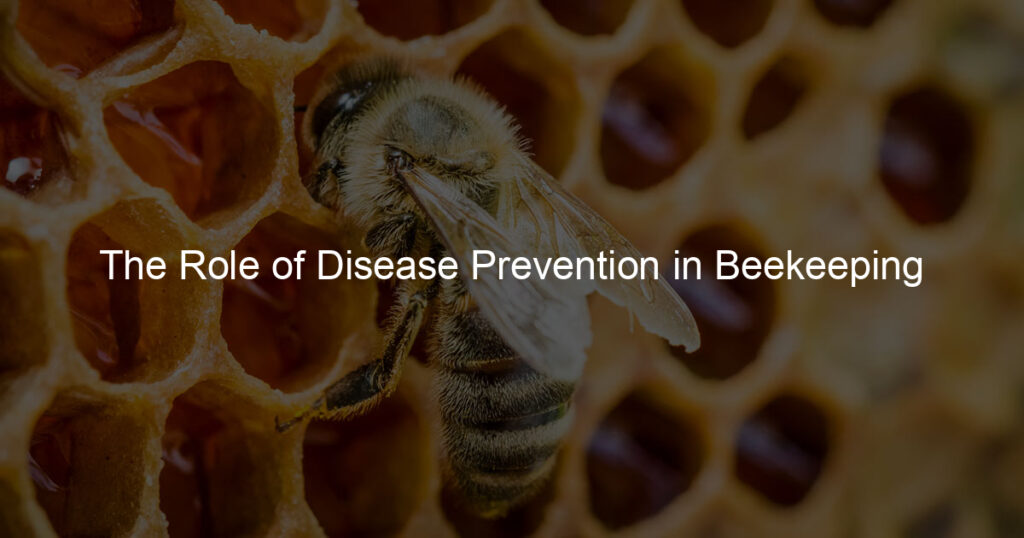As a beekeeper, disease prevention is one of your most important responsibilities. By taking proactive steps to prevent disease, you can protect your bees and ensure a healthy colony.
There are several key practices that every beekeeper should follow to prevent disease, including regular inspections, good sanitation practices, and prompt treatment of sick bees. By following these simple steps, you can help keep your bees healthy and reduce the risk of disease in your hive.
What is the disease in a beehive?
Beehive diseases occur when pathogens infect a beehive, making it unable to produce honey or reproduce.
One of the most common and destructive beehive diseases is the Varroa mite, a parasitic mite that infests both larvae and adult bees. In addition to Varroa, another serious issue with bees is colony collapse disorder, which occurs when multiple colonies suddenly die off for unknown reasons.
Other known threats to beehives include American foulbrood disease, Nosema disease, chalkbrood disease, small hive beetle infestation, and predatory wasp infestations. For our pollinators to remain healthy, beekeepers need to stay up-to-date on the latest news about beehive diseases and keep their hives free from infections by applying good hive management methods such as regular inspections and treatments.
The importance of disease prevention in beekeeping
Beekeeping is a critical part of keeping our environment healthy and sustainable. As bee colonies are susceptible to a myriad of diseases, beekeepers need to make sure that their bees stay protected from diseases that could potentially decimate their hives.
Prevention measures are the first line of defense against disease; this includes regularly inspecting hives for signs of disease and purchasing healthy bees from reputable sources as well as performing regular cleanings on your apiary equipment.
Furthermore, you should minimize the risk of cross controls-contamination bringing wild bees into your colony, using sterilized tools while handling frames and capping honeycombs, and replacing any unhealthy hive components. Through these diligent efforts, disease prevention will be successful in allowing your hives to thrive.
How to treat bees that are affected by diseases
Bees are critical for our ecosystem, and thus it is important to take steps to protect them from the effects of diseases. To cure bees affected by a disease, you should carefully inspect the hive for signs of infection such as discolored wax or eggs that never hatch.
Make sure you are using protective equipment such as gloves and a beekeeping veil when doing this inspection. If a disease is suspected, it is important to contact a beekeeper who specializes in treating diseases as soon as possible to get expert advice on how best to treat the hive.
Steps may include treating the bees with antibiotics, temporarily relocating the hive, and decreasing daily inspections of the colony. Taking these steps will help ensure your bees stay healthy and are well-taken care of.
What causes diseases in bees?
Every year, honey bees suffer from several diseases caused by a variety of factors. Parasites and bacteria are among the most common culprits, but other environmental issues like pesticides can also contribute to bee health problems.
If left unchecked, pests like Varroa mites can quickly spread viruses among bee populations, leading to widespread disease. In addition to external ailments, disease-causing fungi or even genetic deficiencies within beehives may lead to harm or death for individual bees and entire colonies.
Fortunately, through improved beekeeping practices and research into best management strategies such as integrated pest management (IPM), many beekeepers are helping find solutions that minimize the risk of disease in honey bee colonies worldwide.
Final Thoughts
As evidenced by this blog post, disease prevention is an integral part of successful and sustainable beekeeping. By blending the causes and prevention of common diseases, beekeepers can give their bees the best chance for survival and thrivcolonies.
Additionally, routine maintenance like splitting hives and monitoring winter losses are also great ways to prevent damage from viruses and bacteriasbacteriaentially harm bees.
Beekeepers can also take extra precautions such as using protective clothing, managing overcrowding in the hive, regularly inspecting for diseases, providing adequate nutrition for the bees, and avoiding chemical residues in essential products used around the hive.
Ultimately, eliminating potential threats to the hive helps keep your bees healthy now and into the future of your apiary. Being informed about disease prevention gives the diligent beekeeper peace of mind in knowing they’re doing what they can to ensure healthy colonies.








